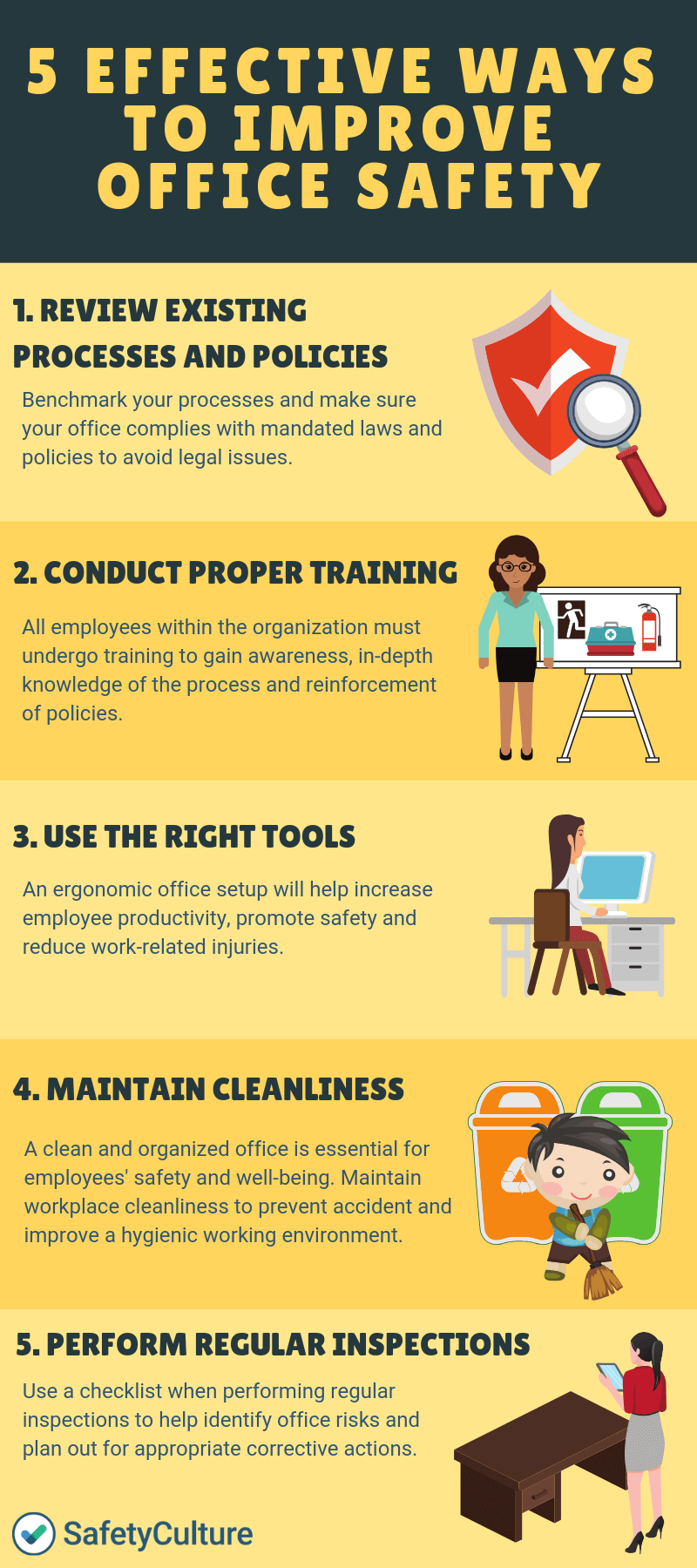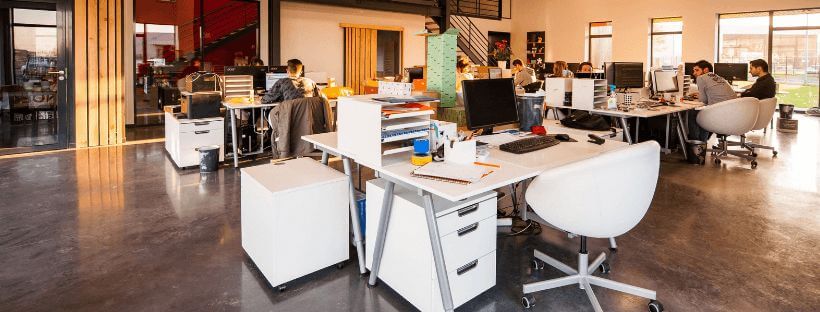
An office is often perceived as a place with less hazards and minimum risk of injury, especially when compared to workplaces in the fields of construction and manufacturing, to name a few. Apparently, it’s not always true. According to a 2017 report of the Bureau of Labor Statistics, there were 2.8 million nonfatal workplace injuries and illnesses reported by private industry employers in the United States alone. This is a proof that office safety is a vital part of any business.
Look around your office and ask yourself: Did I overlook any potential hazards that might harm my employees? Is there something I can do to further improve safety practices in the office? If you answered yes to at least one of these questions, read on and discover effective ways to improve your office safety.
1. Review existing processes and policies
Evaluate your processes and make sure your office complies with mandated laws and policies to avoid fines and legal issues. Check with your employees if they follow safety practices such as emergency procedures, equipment maintenance, and first aid kit readiness.
Office safety isn’t limited to the physical structure of your building, it also means being prepared in the event of power outages, fire, or other workplace accidents. Benchmarking your processes will help the organization execute emergency procedures safely and keep employees away from injuries and confusion.
2. Conduct proper training

Training with proper orientation should be given to all employees within the organization. This will help them understand the processes and their responsibilities according to their role. Training provides employee awareness, in-depth knowledge of the process, and reinforcement of policies. Aside from learning about day-to-day tasks, training should also cover emergency procedures and practices. One of the most common forms of training for office environments is first aid training, which can be done at CPR Oakville.
Perform emergency drills with employees to practice an evacuation process in the event of calamity. These exercises will help your employees apply what they have learned during the training period. Also conduct refresher training courses to keep employees in the loop about new and updated safety techniques and practices.
3. Use the right tools

Ergonomics is often overlooked in an office set up. The use of ergonomic workstations will help employees maintain proper posture and avoid serious musculoskeletal disorders. To boost employee productivity and reduce work-related injuries, it’s also important that they learn the proper way to lift, handle, and carry heavy materials.
Below are some tips you can follow to keep your employees safe:
- Use a ladder when getting stuff beyond your reach, do not use unstable objects like chairs, tables, or unused boxes to avoid falls.
- Provide carts when transporting heavy materials to eliminate heavy lifting that may cause spine injuries.
- Use storage cabinets to stow away personal belongings and eliminate obstructions within the office.
- Use a comfortable chair that has lumbar support and level arm rests to avoid lumbar strain.
- Place the monitor an arm’s length away within eye-level to avoid neck pain.
- Use a window film or blinds to reduce glare and prevent eye strain.
4. Maintain cleanliness
An untidy office can be a cause of accidents if not attended immediately. For example, water spillage on the floor can cause slips, a dusty workstation can cause bronchial asthma and other skin diseases, an obstructed emergency exit can hinder emergency procedures, and unmanaged waste can cause serious health issues. Maintaining a clean office is essential for employees’ safety and well being. Accidents can be prevented by following these tips:
- Remove obstructions on all walking surfaces
- Properly assemble and secure office equipment from tipping
- Wipe all fixtures, furniture, and office equipment
- Keep drawers closed when not in use
- Store documents appropriately on shelves or in filing cabinets
- Clean spillage immediately and place warning signs where necessary
- Empty waste containers regularly and dispose of waste properly
- Schedule regular bathroom sanitation
- Handle, store, and dispose of toxic materials properly
5. Perform regular inspections
Visually inspect the physical structure and facilities of the office. An office safety checklist can help evaluate and record the condition of your office to mitigate risk. Watch out for common hazards like overloaded circuits, extreme temperatures, inadequate lighting, and slip, trip, and fall hazards. Make necessary repairs if needed and remove damaged items to prevent workplace accidents.
As a business owner, you might think that regular inspections cost a lot of money, but they don’t. Regular inspections help prevent bigger issues and help you identify risks and plan out appropriate corrective and preventive actions.
Maintaining a safe and healthy environment in the office provides a lot of benefits for your business. It boosts employee productivity, increases profitability, and reduces work-related injuries. Moreover, a positive working environment helps employees become more efficient and reliable.